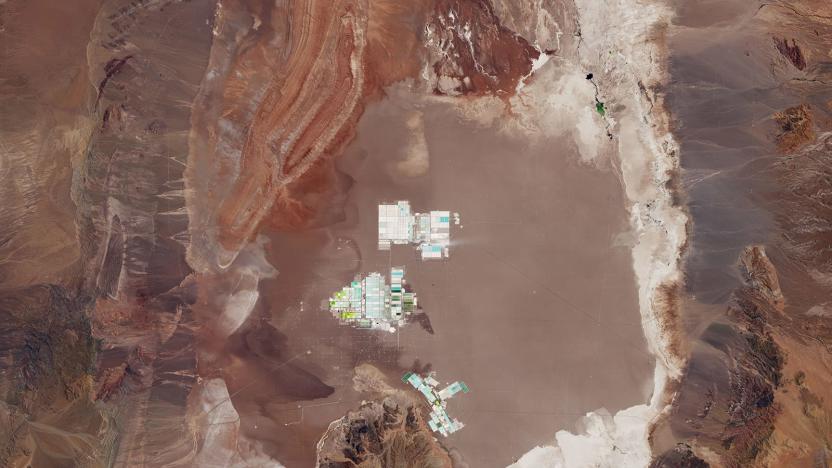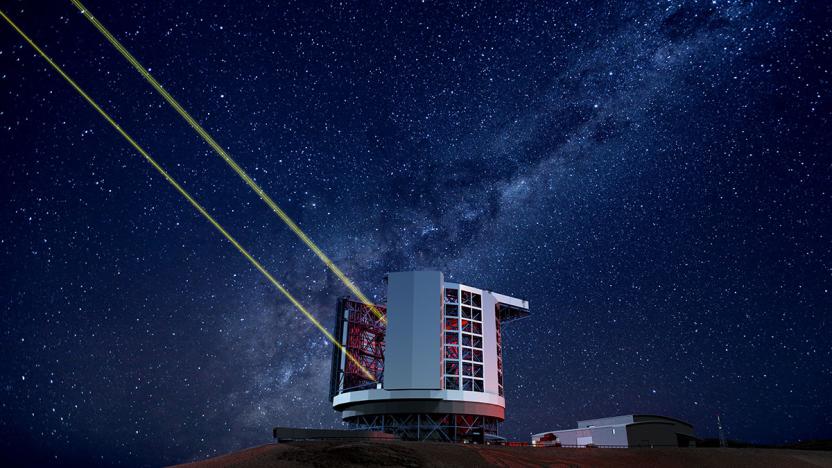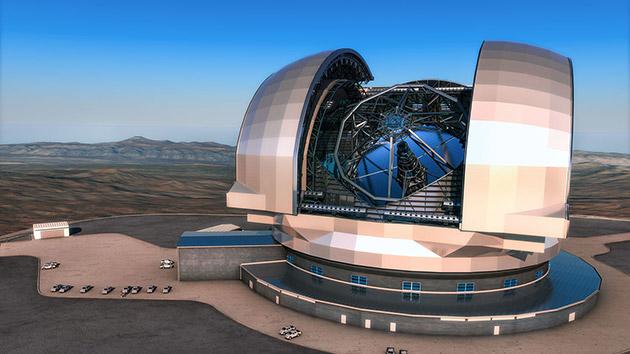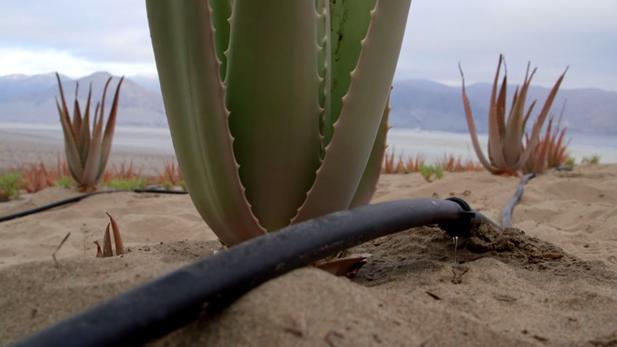Chile
Latest

Smart buoy 'hears' the sea to protect whales against ship collisions
Smart buoys are using AI to listen to the ocean and help ships avoid crashing into whales.

Astronomers may have witnessed a planet's birth
Scientists believe they have observed a planet being formed for the first time.

Google’s Curie undersea cable now connects the US and Chile
Curie, a 10,500-kilometer-long undersea cable, now connects Google data centers in the US and Chile. Today, Google announced that the fiber optic cable has been successfully installed and tested. It is expected to begin transmitting data in the second quarter of 2020, and Google is already working on a branch into Panama.

NASA will livestream the total solar eclipse over South America tomorrow
It's been almost two years since the last total solar eclipse passed over the US, but there's a good chance you remember all of the hype. Now, a total solar eclipse is heading for parts of Chile and Argentina. It will arrive tomorrow, and thanks to NASA and the Exploratorium, you can catch a livestream as it happens. Beginning at 3pm ET, the agency will stream the eclipse, and at 4pm ET it will begin commentary in both English and Spanish. All three streams will be available on NASA's website.

EV batteries are born in Chilean evaporation ponds
Using Landsat data from the US Geological survey, NASA's Laren Dauphin recently imaged the Salar de Atacama in Chile. The enclosed basin is the world's largest source of lithium, producing 29 percent of the world's reserves. Much of it will wind up in rechargeable batteries used by EVs, laptops and smartphones, but how it gets there is surprising -- think salt production, not pit mines.

Scoot brings electric scooter rentals to Santiago, Chile
Scoot is expanding into its third city and it's bringing electric scooters to Santiago, Chile. As part of a pilot program, Scoot will be allowed to launch a fleet of its electric kick scooters in the business district of Las Condes, and up to 500 of the devices will ultimately be approved for operation. "We are excited for this new means of public transportation entering Chile," Las Condes Mayor Joaquín Lavín said in a statement. "This pilot program will be available in the popular business district of Las Condes, where short trips are common. We look forward to people trying this new service and integrating it into their lives. This is a great opportunity for people to get out of their cars and reduce their environmental impact."

The world's largest telescope will unlock the universe's oldest secrets
In the predawn hours of September 20th, 2017, the cavernous hangar doors of the Richard F. Caris Mirror Lab at the University of Arizona slowly swung open and the first of seven gargantuan mirrors passed through on its way to the Las Campanas Observatory in Chile where they will be assembled into one of the largest star-gazing instruments ever constructed: the Giant Magellan Telescope (GMT).

Construction starts on the world's largest optical telescope
After several years of planning and no shortage of financial anxiety, construction has officially started on the Extremely Large Telescope. Contractors are now building the main structure and dome of the Chile-based observer ahead of its initial service in 2024. That's a long time to wait, but this is no mean feat. With a 43-yard aperture, this promises to be the world's largest optical telescope for sometime, even compared to future or in-limbo projects like the Thirty Meter Telescope. Those gigantic dimensions will help it capture far more light, giving astronomers the chance to spot particularly distant galaxies, find small planets and capture more details of larger planets.

Lawmaker: Chile and Texas don't share a flag, y'all
The current roster of emojis includes many national flags, but not state-specific ones. So, left with few other options, people have taken to using the Chilean flag emoji (🇨🇱) to signify Texas pride. This makes sense considering how much the two flags look alike, but one Texas lawmaker has had enough.

ESO will upgrade its Very Large Telescope to hunt for exoplanets
The European Southern Observatory's Very Large Telescope is getting an upgrade. ESO signed an agreement with Breakthrough Initiatives, a program created to search for extraterrestrial intelligence, to modify its infrared instrument called VISIR (VLT Imager and Spectrometer for mid-Infrared). Once it's done, the observatory in the Atacama Desert of northern Chile will easily be able to spot exoplanets in the Alpha Centauri. According to ESO, the astronomers' discovery of a habitable planet in our neighboring star system late last year "adds even further impetus to this search."

Six places where renewable energy is cheaper than fossil fuels
By Cat DiStasio In the race to reduce the world's reliance on fossil fuels, cost is a huge factor. It's taken years, but advances in technology and increases in both efficiency and output have helped bring down the expense of renewable energy, which has in turn increased demand. Globally, fossil fuels are still cheaper than these alternative sources, but there are a few places around the world where clean energy is winning, dollar for dollar. Sometimes, too, there's so much of it that the market price drops to zero. With the cost of renewable energy getting lower by the year, if not the month, environmental advocates are hopeful that energy sources like solar and wind power can eventually edge out fossil fuels entirely. Let's take a look at some of the locales where renewable energy is proving that a clean world doesn't have to be more expensive.

FBI Dark Web hacks were a part of a global child porn bust
That FBI hacking initiative that caught 1,500 pedophiles on the Dark Web? It was just the tip of the iceberg. Motherboard has discovered that the operation was just one part of Operation Pacifier, a global campaign to fight child porn hidden through anonymity networks like Tor. The effort had the FBI hacking systems as far afield as Chile, Denmark and Greece -- there are also hints of possible operations in Colombia and Turkey. The US agency wasn't working alone, either, as it teamed up with Europol to collect information and pass it along to local law enforcement.

Construction has begun on the Giant Magellan Telescope in Chile
A groundbreaking ceremony on top of a mountain in the Chilean Andes on Wednesday has signaled the beginning of Giant Magellan Telescope's construction. Three years after blowing up the peak where the structure will be built, the GMT Organization's Board of Directors has finally given its builders the go-signal. It can afford to do so now that the US, Australia, Brazil and Korea have committed $500 million to the project. According to Ars Technica, bulldozers have moved in to level a road that goes up to GMT's location at Carnegie Institution's Las Campanas Observatory -- which also serves as home to other telescopes, including the smaller Magellans -- as soon as the ceremony was done.

New telescope will be a high-resolution window to the universe
That 3D rendering up there is a new telescope from the National Science Foundation that promises to solve the mysteries of the universe -- or at least take some truly big pictures. Fitted with a 3,200 megapixel camera, the Large Synoptic Survey Telescope will be the largest digital camera in the world. Once operational, it will scan the entire night sky a few times a week for ten years and is expected to provide scientists unprecedented access to previously inscrutable parts of the cosmos. The camera will literally shed light on dark energy that is believed to accelerate the expansion of the universe, but has long evaded definitive probes. Apart from capturing images of exploding supernovae at an unfathomable distance, it can detect and track asteroids in our planet's vicinity.

A single Google balloon delivered internet from Chile to Australia
It's been interesting watching Google's Project Loon progress, and the latest test run for the balloon-based internet service is perhaps the most impressive. A single balloon recently launched from New Zealand and traveled some 5,500 miles (9,000 kilometers) across the Pacific Ocean to Chile where Google started putting it through its paces. Once in the South American country's airspace, Project Loon members issued a command for the balloon to change altitude and hit a wind pattern that caused it to cut its 80 KPH (almost 50 MPH) speed by a quarter. That gave the ground team a chance to use smartphones to test the airborne LTE network's mettle.

The 'Extremely Large Telescope' on track to study the universe by 2024
The construction of European Southern Observatory's Extremely Large Telescope, which will boast a humongous 39-meter aperture, is no longer in limbo. Its development in Chile's Atacama Desert is finally on track two years after the project was approved, thanks to Poland joining the organization. See, the country brought in enough money so that the telescope's now 90 percent funded, which was the goal the ESO set to greenlight phase one of construction. "Phase one" entails building the dome and the structure itself, a feat that will take 10 years and €1 billion ($1.24 billion) to complete.

MIT harvests fog to make water in one of the driest places on Earth
The climate is so arid in some corners of the globe that virtually any source of water is crucial to survival; even the fog rolling over the hills could make a big difference. MIT is well aware of this, and has been testing an advanced form of fog harvesting in Chile's Atacama Desert (one of the driest places on the planet) to see how the technology can help communities in very harsh regions. By taking inspiration from fog-collecting organisms like beetles and grass, researchers built large meshes that are 500 percent more efficient at turning fog into drinkable water than previous systems. In the Atacama experiment, they're good enough to produce half a gallon of water a day for every 10 square feet of mesh. That's not a lot, but it's sufficient for watering gardens of edible plants like aloe vera.

Books come to Google Play in five South American countries
Google Play Books' expansion tour has just made an important stop in South America. As of today, bookworms in Argentina, Chile, Colombia, Peru and Venezuela can browse Google's virtual shelves from Android, iOS or the web. The wider access sadly doesn't include movies, music or periodicals, but locals who want to read up on everything from Machu Picchu to Medellin should be happy.

Evilot takes Plants vs. Zombies to Triple Town
This is Portabliss, a column about downloadable games that can be played on the go. Plants vs. Zombies has long been one of the most popular titles on the App Store (or any platform it's been released on, really), but PopCap has only recently revealed a sequel set to arrive in another month or so. In all that time, then, it's not surprising that game developers have "borrowed" PopCap's casual tower defense formula, where you build up units in lanes to defend against an oncoming horde. Samurai Bloodshow is one of the best pretenders to the throne, and there are other games like Legendary Wars that took PopCap's premise and ran far with it. Evilot also belongs in the second category. It's a recently released iPad game that has a very clear resemblance to the longtime battle of flowers against the undead, in that enemy troops come in by lanes from the right, and you need to build up units to defend treasure on the left. But while Plants vs. Zombies uses a straightforward currency system to build up its units, Evilot borrows a core mechanic from another great iOS title: Triple Town.

Earth's largest telescope gets to work in Chile after 30 years of planning
Nestled within the Chilean Andes, the new Atacama Large Millimeter-submillimeter Array (ALMA) is now open for space-staring business. The biggest, most complex telescope project to date, ALMA will be able to peer into the deeper reaches of space with "unprecedented power", according to astronomer Chris Hadfield. Covering around half of the universe's light spectrum, between infrared and radio waves, the new telescope should be able to detect distant planets, black holes and other intergalactic notables. The Chilean desert's lack of humidity was a big reason for the telescope's placement, 16,400 feet above sea-level, aiding precision of the scope. But it's a global project, with the US contributing $500 million and making it the NSF's biggest investment ever. From Japan, Fujitsu's contribution to exploring the final frontier consists of 35 PRIMERGY x86 servers, tied together with a dedicated (astronomy-centric) computational unit. The supercomputer will process 512 billion telescope samples per second, which ought to be more than enough to unlock a few more secrets of the cosmos.











